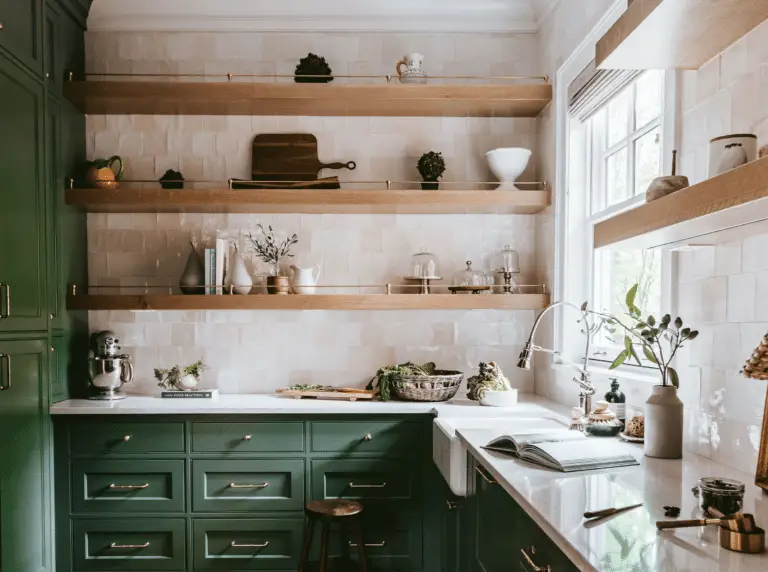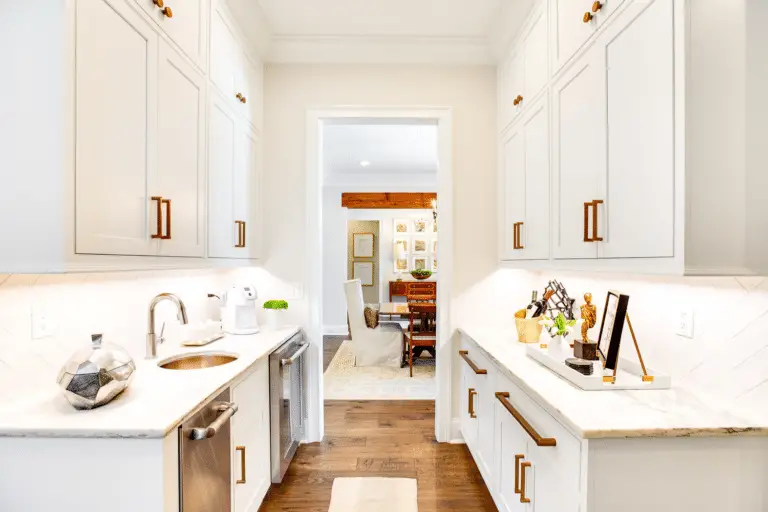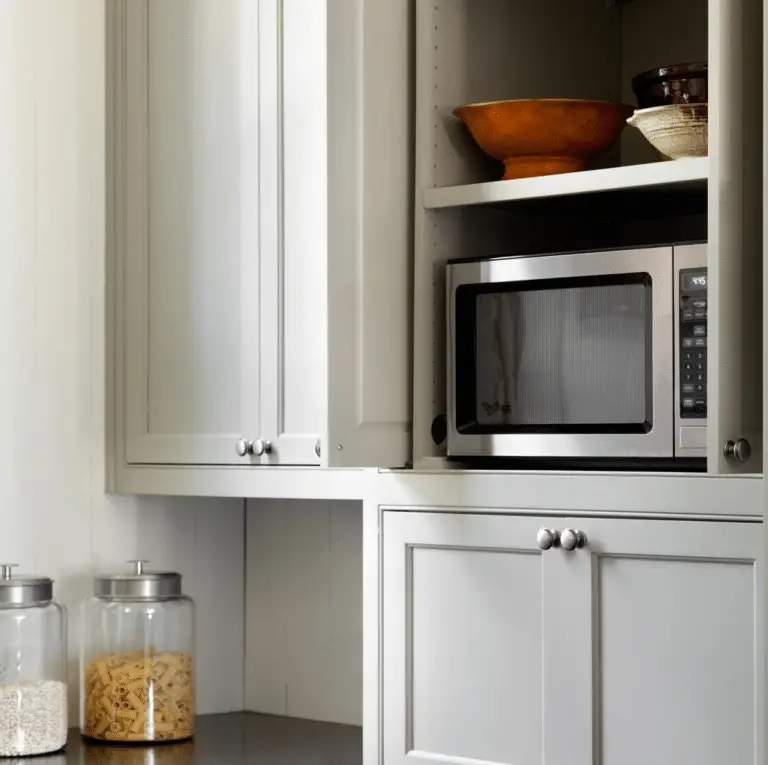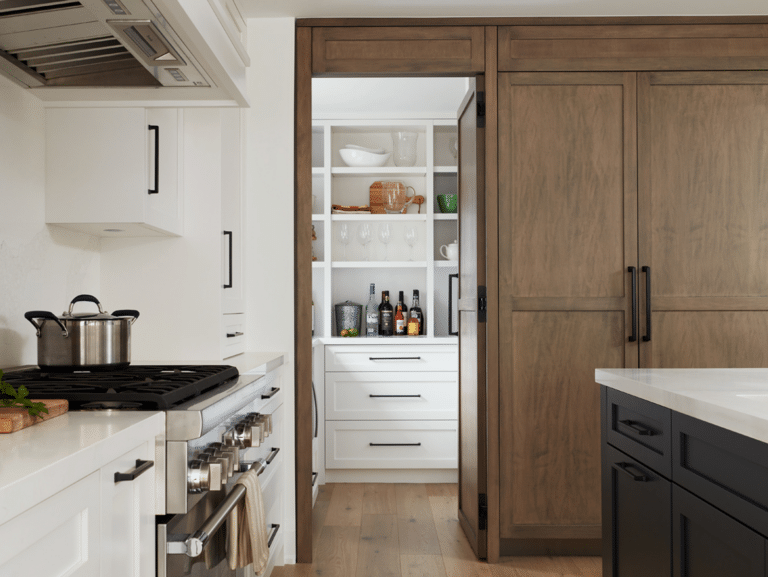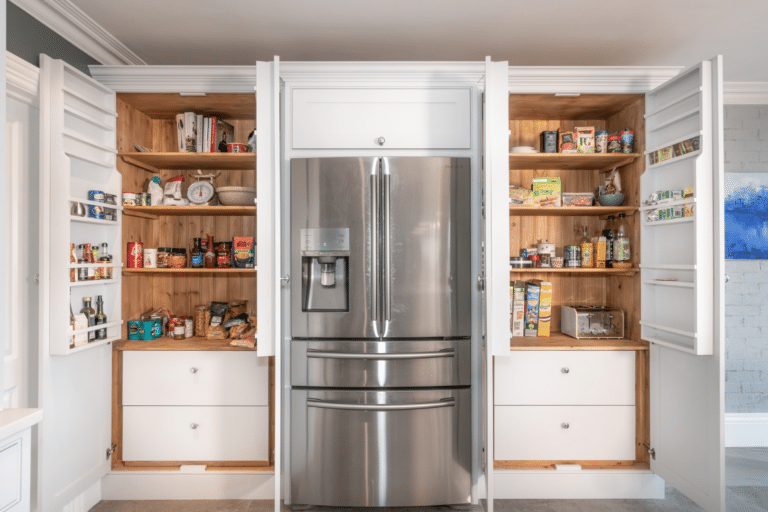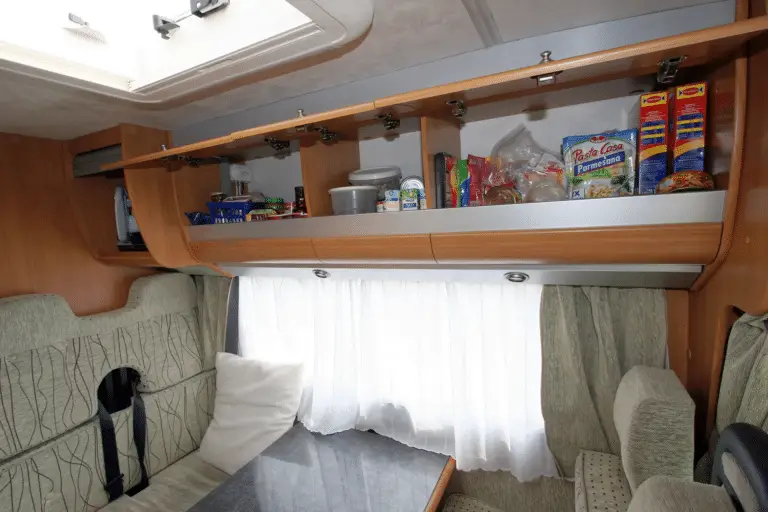Hey there! Ever considered the untapped potential of your under-stairs area? Dive into the world of under-stairs pantries with us to discover the practicality and space-saving benefits they offer. From design ideas to organizing tips and DIY vs professional assistance, we’ve got you covered.
And if you’re in need of inspiration, we’ve got some amazing case studies to showcase transformative pantry conversions. Ready to make the most of your under-stairs space? Let’s get started! Storage Solutions for Under Stairs Pantries.
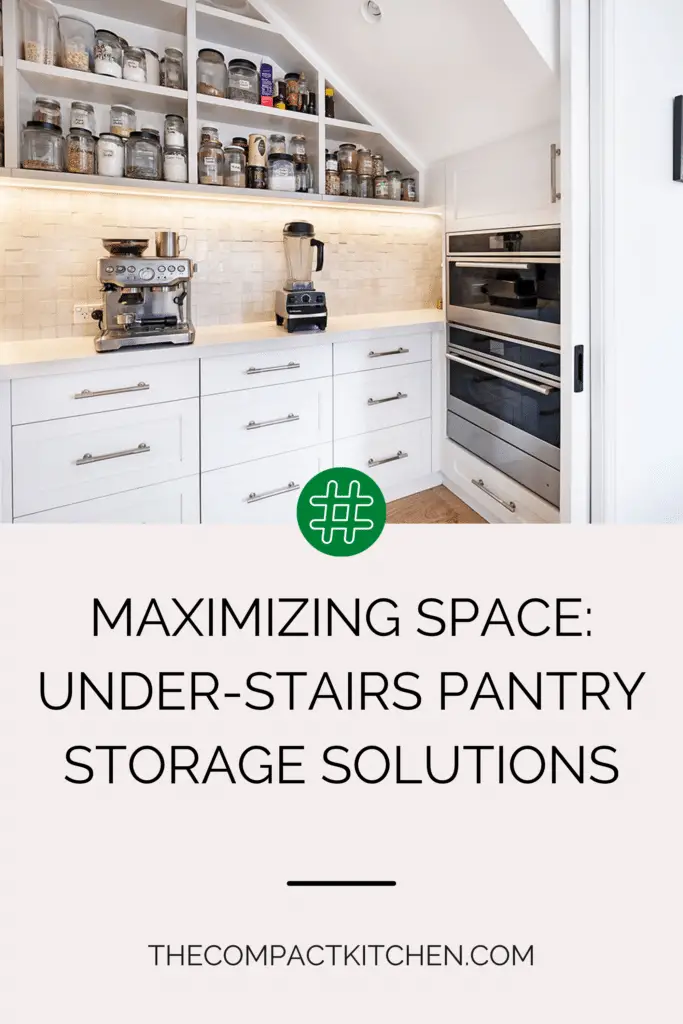
Exploring the Potential of Under-Stairs Pantries
When it comes to maximizing space in your home, the under-stairs area often goes overlooked. However, this space holds great potential for storage solutions. By converting it into a pantry, you can take advantage of the practicality and space-saving benefits it offers.
One key factor to consider when exploring the potential of under-stairs pantries is the types of items suitable for storage in this space. From non-perishable food items to small kitchen appliances, there are endless possibilities for what can be stored in your under-stairs pantry.
Understanding the Practicality and Space-Saving Benefits
Converting the under-stairs area into a pantry not only provides you with additional storage space but also helps you keep your kitchen organized. By utilizing this often underutilized space, you can free up valuable storage space in your kitchen, making it easier to find and access your pantry items.
Considering the Types of Items Suitable for Storage
When determining what items to store in your under-stairs pantry, consider the items that are not frequently used but still need to be easily accessible. This could include extra kitchen gadgets, bulk pantry items, or specialty cookware. By storing these items in your under-stairs pantry, you can free up much-needed space in your kitchen for everyday essentials.
Design Ideas for Under-Stairs Pantries
When it comes to creating storage solutions for under stairs pantries, the design is key to maximizing the space and functionality of the area. By exploring various design ideas, homeowners can ensure that their pantry meets their storage needs while also enhancing the overall look and feel of their home.
Optimizing Storage Space
One of the main considerations when designing an under-stairs pantry is how to optimize storage space. A mix of shelving and drawers can be a great way to make the most of the space available. Shelving can be used to store items that are easily accessible, such as canned goods and kitchen supplies, while drawers can be used for items that need to be neatly organized, like utensils or small appliances.
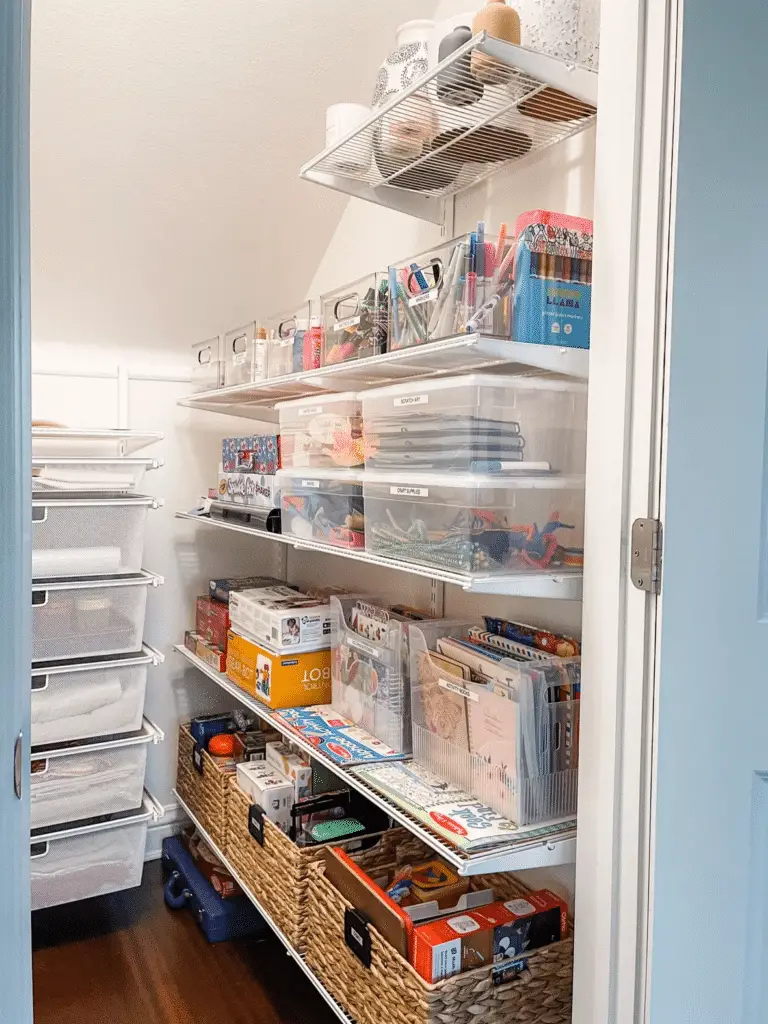
Another design idea for under-stairs pantries is to incorporate pull-out shelves or baskets, which can make it easier to access items stored at the back of the pantry. This can help prevent items from getting lost or forgotten, ensuring that the pantry remains well-organized and efficient.

Importance of Lighting and Ventilation
In addition to storage solutions, it’s important to consider the lighting and ventilation in an under-stairs pantry. Proper lighting can make it easier to see and access items stored in the pantry, while also creating a welcoming atmosphere. This can be achieved through the use of overhead lighting, under cabinet lighting, or even motion-sensor lights for convenience.

Good ventilation is also crucial in maintaining the condition of the pantry and its contents. Adequate airflow can help prevent moisture buildup, mold, and mildew, which can damage food items and storage containers. Installing a small exhaust fan or keeping the pantry door slightly ajar can help promote air circulation and keep the space dry and well-ventilated.
Best Practices for Organizing Your Under-Stairs Pantry
When it comes to creating a functional under-stairs pantry, organization is key to maximizing the storage potential of the space. By following some best practices for organizing your pantry, you can ensure that everything is easily accessible and well-maintained.
Categorizing Items
One of the first steps in organizing your under-stairs pantry is to categorize items based on their use and size. Keep similar items together, such as canned goods, spices, or baking supplies. This will help you locate items quickly and prevent overcrowding on shelves.
Labelling Shelves

Adding labels to your pantry shelves can make a big difference in maintaining an organized space. Labeling shelves with categories like “snacks,” “canned goods,” or “baking essentials” will help you and your family members know where everything belongs and where to put items back after use.
Arranging Products by Frequency of Use
Another effective organizing strategy is to arrange your pantry products based on how frequently you use them. Keep everyday items like cooking oils, spices, and snacks at eye level or within easy reach. Store less frequently used items on higher or lower shelves to maximize space.
Benefits of a Well-Organized Pantry
Keeping your under-stairs pantry well-organized offers several benefits beyond just tidy shelves. A well-organized pantry can streamline your cooking and meal preparation process, saving you time and reducing stress. Additionally, knowing what items you have on hand can help prevent food wastage by using up ingredients before they expire.
By following these best practices for organizing your under-stairs pantry, you can create a functional and efficient storage space that enhances your kitchen experience.
DIY Storage Solutions vs Hiring a Professional
When it comes to converting an under-stairs space into a pantry, one of the key decisions you will need to make is whether to tackle the project yourself with a DIY approach or hire a professional. Each option comes with its own set of advantages and drawbacks that are important to consider before making a decision.
Cost and Time Considerations
One of the first factors to evaluate when deciding between DIY storage solutions and hiring a professional is the cost involved. DIY projects typically have a lower upfront cost as you will not be paying for labor. However, it’s important to consider the cost of materials, tools, and any potential mistakes that may require additional spending to correct. On the other hand, while hiring a professional may come with a higher initial cost, you can benefit from their expertise and the assurance that the job will be done correctly.
Time is another crucial aspect to think about. DIY projects may take longer to complete as you may need to work on it during weekends or after work hours. If time is of the essence, hiring a professional can save you a significant amount of time and ensure that the project is finished in a timely manner.
Quality and Customization
Another consideration when deciding between DIY and professional storage solutions is the quality of the end result. DIY projects can vary in quality depending on your skills and experience. While some may achieve professional-looking results, others may fall short of expectations. Hiring a professional ensures a certain level of quality and craftsmanship that may be difficult to achieve with a DIY approach.
Furthermore, customization is a factor to keep in mind. DIY projects allow you to personalize the pantry design exactly to your liking. You can choose the materials, layout, and features that suit your needs and preferences. On the other hand, professionals may bring fresh ideas and expertise to the table that can enhance the functionality and aesthetic of the pantry.
Value Addition and Complexity
Lastly, consider how the storage solution will add value to your property. DIY projects may add a personal touch to your home and be a source of pride in your craftsmanship. However, professional renovations may increase the resale value of your home, especially if the pantry is well-designed and adds significant functionality to the space.
When weighing DIY storage solutions against hiring a professional, assess your own skills, available time, budget, desired level of customization, and the complexity of the project. Ultimately, the decision should align with your goals for the under-stairs pantry and how you envision it fitting into your daily life.
Case Studies: Inspiring Under-Stairs Pantries Transformations
Transforming under-stairs spaces into functional pantries is not only about practicality but also about adding aesthetic value to your home. Here, we will delve into some inspiring case studies of successful under-stairs pantry conversions that have truly transformed the homeowners’ kitchen and storage experiences.
Story 1: From Cluttered Corner to Organized Oasis

One homeowner took their under-stairs space from a cluttered corner filled with miscellaneous items to an organized oasis that now serves as a beautiful pantry. By incorporating custom shelving units and pull-out drawers, they were able to maximize every inch of the space. The addition of proper lighting enhanced the visibility and functionality of the pantry, making it a joy to use every day.
Story 2: Small Space, Big Impact

In another case study, a homeowner with limited kitchen storage opted to turn their under-stairs area into a compact yet highly efficient pantry. By installing tall, narrow shelves and utilizing every available nook and cranny, they were able to store a surprising amount of pantry essentials. The transformation not only added much-needed storage space but also brought a touch of creativity and uniqueness to their kitchen.
Story 3: Seamless Integration with Style
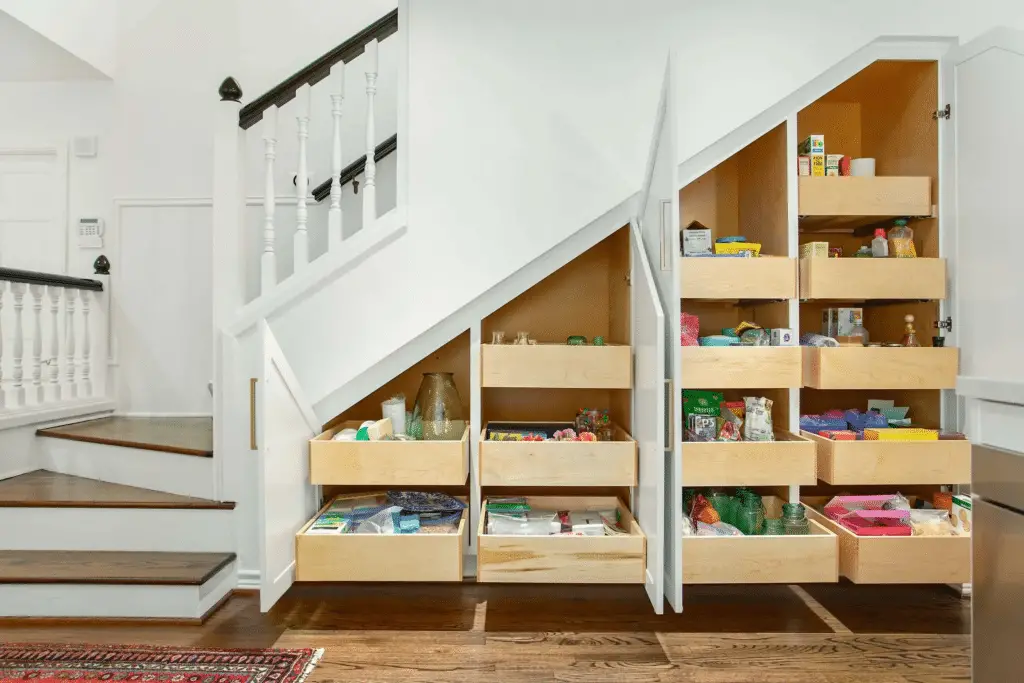
For a homeowner looking to combine functionality with style, converting the under-stairs space into a pantry was the perfect solution. By working with a professional designer, they were able to seamlessly integrate the pantry into the overall kitchen aesthetic. Pull-out shelves, clear storage containers, and stylish labels were used to create a visually appealing and highly organized pantry that complements the rest of the home.
These case studies showcase the versatility and potential of under-stairs pantries when it comes to storage optimization and practical pantry design. By leveraging creative storage ideas and attention to detail, homeowners can truly make the most of this often-overlooked space.
Key Takeaways on Under-Stairs Pantries
In conclusion, under-stairs pantries offer great storage solutions by maximizing space and organization potential. From design ideas to organizing tips, creating your pantry can be a fun and rewarding project.
Whether you choose to DIY or hire professionals, the key is to prioritize functionality, proper lighting, and ventilation. Look for inspiration from successful case studies to transform your under-stairs space efficiently. Start your journey to a more organized and efficient kitchen with a unique under-stairs pantry!



